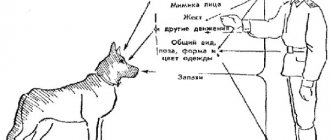Getting the dog used to the car
Problems with travel do not arise for those animals that travel with their owners from puppyhood - everything is familiar to them. But if you put your dog in the car only for trips to the veterinarian, which all four-legged animals are afraid of, problems cannot be avoided.
There are many hiking accessories for dogs. These include special drinking bowls in the form of a bottle with a folding tray, the cost of which starts from 300 rubles, and spill-proof food bowls with edges curved inward, the price of which starts from 350 rubles.
There are many hiking accessories for dogs. These include special drinking bowls in the form of a bottle with a folding tray, the cost of which starts from 300 rubles, and spill-proof food bowls with edges curved inward, the price of which starts from 350 rubles.
If a lot of time has passed since the last trip, the dog may become weaned from the car. In this case, before the trip, as for the first time, let the animal sniff it. Then put him in the car, sit next to him, start the engine and let the dog know that everything is fine by rewarding the behavior you want with a treat.
It’s better to start with short trips with a purpose that is pleasant for the dog - to the park, forest, to the country... Then the animal will associate the car with a walk.
And now that you've dealt with your dog's stress, it's time to talk about restraint devices and protecting the interior from scratches, hair and, of course, drool.
Setting up the place
There are many devices for comfortable and safe transportation of dogs in a car: if the animal is comfortable and calm, it will not disturb the driver and passengers. The main thing is to create a support for the paws. Sitting or lying on the floor may be uncomfortable for her.
A hammock for a dog, attached to four headrests, can be purchased at a price of 1,200 rubles, and a carrier for a small dog in which it can stand will cost the same amount today.
A hammock for a dog, attached to four headrests, can be purchased at a price of 1,200 rubles, and a carrier for a small dog in which it can stand will cost the same amount today.
What types of dog beds are there for cars?
Case bag
If you decide to travel with a small dog, then there should be no problems with accommodation in the car. There are special plastic boxes with the ability to be attached to a seat belt, as well as bags-covers for installation, incl. and in the front seat of the car. The dog will feel comfortable and safe in them.
Car hammock for dogs
To transport larger dogs, a hammock-style cover is most often used, which is placed in the back seat of the car. With its help, you can completely cover the surface of the backs of the front seats and the rear sofa, and the sides of such a cover will protect the door upholstery. Some models of car hammocks can be transformed, placing them either on the entire back seat or on 1/3 and 2/3 of the sofa, allowing you to place not only the dog, but also passengers.
Cover for the back seat of a car
Unlike a car hammock, the mat does not have “sides” and does not provide door protection. But such an accessory copes 100% with the function of protecting seats. There are 2 types of car bed for dogs: with fastening only on the rear headrests and with double fastening, when fastening is carried out on both the rear and front seats. In the first case, it becomes possible to accommodate passengers with the dog, but in the second case there is no such possibility, but the dog is protected from a sudden fall between the seats, for example during sudden braking.
Trunk cover
Owners of crossovers and SUVs most often transport their dog in the trunk, where there is also something to eat: the backs of the seats, the upholstery of the side parts of the trunk and even the rear window - all this often becomes an object of attraction for dog hair, drool and dirty paws. Fortunately, you can now find and order a universal trunk cover that will protect not only the trunk, but also the rear bumper, which often gets scratched when the dog jumps into the trunk on its own. These covers are suitable for all types of cars with a 5th door. They are attached to the rear headrests and fixed on the sides with special Velcro or ties, which allows you to close the trunk space as much as possible. You can also use a ramp to comfortably place your dog in the trunk. This accessory is very useful for large dogs with sore joints or older dogs who cannot manage to jump into a car on their own.
Getting ready for the road
It is not recommended to feed the animal before the trip - it will be less vomiting if it is hungry. But you should take with you a favorite treat and, perhaps, a favorite toy that will calm her down just by lying next to her. And be sure to take water so that the animal does not overheat due to stress and can drink during stops.
How often should you stop on the road so your dog can stretch? It all depends not only on her temperament, but also on her size. Small dogs cannot endure for long, and you should stop for a walk every two hours. But even if you have a large dog, stopping less than once every six hours is not recommended. In addition, during a walk the animal gets rid of stress.
How often should you stop on the road so your dog can stretch? It all depends not only on her temperament, but also on her size. Small dogs cannot endure for long, and you should stop for a walk every two hours. But even if you have a large dog, stopping less than once every six hours is not recommended. In addition, during a walk the animal gets rid of stress.
Rules for transporting pets
The delivery of pets by train is regulated by the Ministry of Transport of the Russian Federation in accordance with the Rules for the Transportation of Passengers and Baggage No. 473 (as amended in 2020) and the Charter of Russian Railways. The old edition was in effect from 2013 to 2021.
The main snag at this time was the need to have a complete package of accompanying documents:
- passport;
- veterinary certificates;
- information about the animal's vaccinations.
The rules for transporting dogs on trains in Russia in 2021 have significantly simplified the delivery procedure - you just need to have a travel pass for the animal and take into account some subtleties.
The latest edition of Law No. 18-FZ “Charter of Railway Transport of the Russian Federation” dated January 10, 2003 is available here
Long distance routes
For Russian Railways trains, general transportation rules apply depending on the size of the pet and the type of carriage. Animals are divided into small and large.
The first include those who are placed in a container not exceeding 180 cm in terms of the sum of length, width and height. Large breeds include all others. Each passenger can take one container for transportation. The cage or carrier is transported in accordance with the rules applicable to hand luggage in the appropriate places.
The possibility of delivery itself depends on the type of car.
Watch the video: “Carrying a dog on a train to an exhibition.” This point should be paid attention to in advance, because if its class does not provide for the transportation of animals, it will not be possible to transport them even for money:
- Transportation is prohibited - class 1D (SV), 2D (compartment), 3E, 3T, 3L, 3P, 1R, 2R, 3R, 1C, 2C, 2E, 2M, 3C (sedentary), 3B (general);
- allowed, free of charge - 1A, 1I, 1M (luxury), 1E, 1B (SV), 1B;
- allows, but for a fee - 2K, 2U, 2L (coupe), 3D, 3U (reserved seat), 2B, 2ZH, 3ZH, 3O;
- when purchasing all seats - 1F, 1U, 1L (SV), 2F, 2B.
Please note: regardless of the type of carriage, transportation by law does not require accompanying documentation in the form of certificates from a veterinary clinic.
High speed trains
The following rules apply for high-speed trains of Russian Railways:
- "Martin".
Paid transportation on a general basis, i.e. one small animal for each passenger, up to two - when paying for an additional seat. Large breeds of dogs are not allowed for transportation. In trains classified according to the categories of JSC FPC, transportation of animals is carried out in cars 2B, according to the system of the Directorate of High-Speed Transport - in 5 and 10. Note: in SV, traveling from Moscow to Nizhny Novgorod, it is allowed to transport one large dog, if the compartment bought out completely. To do this, you need to take places in class 1E. - "Swift". Delivery takes into account the current rules for the import of animals in force in European countries. In all carriages, transportation is allowed if the seats in the compartment are fully purchased. There is no additional fee for shipping animals.
- "Peregrine Falcon".
Paid seats in all classes. In economy, the rules are standard - transportation of pets is allowed. In other categories, there are additional restrictions on the size of the carrier - the sum of the measurements is 120 cm, and the weight together with the animal should not exceed 10 kilograms. In first and business class, pets will not be next to the owner, but near the conductor’s seat, in special areas under his supervision. In the “compartment-negotiation” type of carriage, transportation is permitted only with 100% redemption. The restrictions for portable containers are similar. Please note: the service becomes unavailable 48 hours before departure. You should immediately exclude the option if the trip is urgent. - "Allegro". Finnish veterinary regulations must be taken into account. You are allowed to take up to two dogs of any breed with you, subject to transportation standards. For passengers with a guide dog, travel in second class carriages is provided. No additional payment required. For all other animals, you need to pay 15 euros to the ticket office - the amount is included in the final cost of the passenger ticket.
Electric trains
The main difference between transporting animals on trains is that it is not necessary to have a special container. Small dogs can be carried by hand if they have a leash and muzzle. Large breeds travel in the vestibule under the supervision of their owners, and no more than two such dogs are allowed per carriage.










